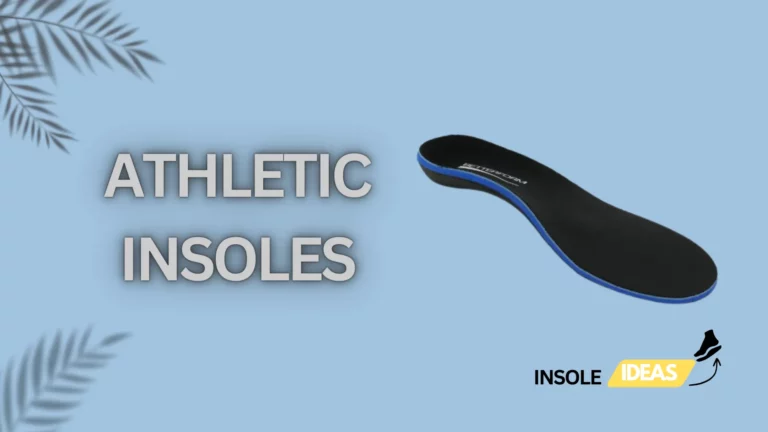Biomechanics in Hockey
Biomechanics in hockey plays a pivotal role in understanding the intricate movements and physical demands placed on the body during gameplay. Specifically focusing on the functionality of the foot within this dynamic sport provides a fundamental understanding of how performance is influenced.
Foot Functionality During Gameplay
The foot serves as the primary interface between the player and the ice surface. Its functionality impacts balance, agility, and overall movement. Analyzing the biomechanics of the foot during skating, stopping, and maneuvering elucidates the stress points and load distribution, essential for optimizing performance and preventing injuries.
Impact of Foot Structure on Performance
The structure of an athlete’s foot significantly influences their skating technique and efficiency. Factors like arch height, pronation, or supination affect stability and force transmission. Understanding these influences helps in customizing equipment and techniques to cater to individual players’ needs, enhancing their overall performance on the ice.
Analyzing Hockey-Specific Movements
Hockey involves unique movements that demand specific biomechanical analyses to optimize performance and prevent injuries. Understanding the mechanics of skating and the pressure exerted on the foot during different maneuvers is crucial.
Skating Mechanics and Foot Pressure
The complex motion of skating involves various forces acting on the foot. Analyzing the mechanics behind forward, backward, and lateral skating movements helps comprehend the pressure distribution on the foot, aiding in designing supportive gear and training regimes.
Stress Points and Pronation/Supination
Identifying stress points and analyzing pronation/supination during different movements enables the development of corrective measures and support systems. By taking care of these issues, performance is improved and the likelihood of frequent injuries brought on by repeated actions in hockey is decreased.
Role of Insoles in Biomechanical Support
Insoles play a pivotal role in providing biomechanical support to hockey players. They serve as a crucial interface between the foot and the skate, influencing alignment, stability, and overall comfort during gameplay.
Aligning Foot and Skate Structure
Customized insoles align the foot’s natural contours with the skate, optimizing the interface for efficient energy transfer and reducing the risk of misalignment-related injuries. They help in maintaining a proper foot position within the skate, enhancing overall control and responsiveness.
Enhancing Stability and Motion Control
Insoles designed with specialized materials and contours enhance stability by minimizing excessive foot movement within the skate. This control over motion aids in precise maneuvering, contributing to a player’s agility and confidence on the ice.
Distributing Pressure and Impact
Strategic placement of cushioning and support within the insoles helps distribute pressure evenly across the foot. Insoles reduce the incidence of injuries like stress fractures and soft tissue damage brought on by repeated high-impact activities by absorbing and dispersing impact pressures.
Material Science of Hockey Insoles
Understanding the materials used in hockey insoles is crucial to comprehending their impact on performance and injury prevention. The composition and design of these materials significantly influence their effectiveness.
Understanding Insole Components
Insoles consist of various components such as cushioning materials, arch supports, and structural elements. Each part has a distinct function that helps to stabilize, support, and soothe the foot while skating.
Impact of Materials on Performance
The choice of materials, such as specialized foams or polymers, directly affects the insole’s ability to provide shock absorption, energy return, and durability. Materials with superior moisture-wicking properties also help maintain a dry and comfortable environment inside the skate, reducing the risk of blisters and discomfort.

Engineering Customization for Hockey Players
Customization in engineering tailored solutions for hockey players involves advanced techniques and personalized design approaches to address individual biomechanical needs and preferences.
3D Scanning and Modeling Techniques
Utilizing 3D scanning technologies, precise models of a player’s feet are created. This detailed mapping allows for accurate customization of insoles, considering unique foot contours, arch types, and pressure points. Such techniques ensure a personalized fit for optimal support and performance.
Individualized Design and Fabrication
Based on the data collected from scanning and modeling, insoles are intricately designed to cater to a player’s specific requirements. The fabrication process involves integrating material choices and structural elements to provide targeted support, enhancing comfort and performance on the ice.
Research and Development in Insole Technology
Continuous advancements in insole technology are driven by ongoing research, aiming to enhance comfort, support, and injury prevention for hockey players.
Innovations in Shock Absorption
Innovative materials and design strategies are constantly being explored to improve shock absorption capabilities. Insoles are engineered to better absorb and dissipate impact forces, reducing stress on the foot and lower extremities during high-intensity gameplay.
Integration of Advanced Materials
Integrating cutting-edge materials, such as high-performance polymers or nano-fiber composites, enhances insole properties like durability, flexibility, and weight. These advancements contribute to lighter yet more robust insoles, supporting players’ agility without compromising on protection.
Future Prospects and Advancements
The future of insole technology in hockey continues to evolve with promising avenues for technological advancements and performance enhancement.
Potential Technological Enhancements
Advancements like smart insoles embedded with sensors to monitor gait, pressure distribution, and fatigue levels could revolutionize player-specific training programs and injury prevention strategies.
Evolving Role of Insoles in Hockey
As technology progresses, insoles are poised to become even more integral, moving beyond mere support mechanisms to active contributors in enhancing a player’s biomechanics and overall performance.
Conclusion
In conclusion, understanding the biomechanics of hockey, particularly regarding foot function and the role of insoles, is critical for optimizing player performance and mitigating injury risks. The continual development of insole technology holds immense promise for the future, ensuring hockey players benefit from tailored support and enhanced performance on the ice.







